How To Eat Wild Forest Lobsters -- Lobster Mushrooms, That Is! 🍄
How can this ugly thing be good to eat? It is! It's a wild lobster mushroom! Sure, they look strange. But they are delicious and fascinating! Come into my post to find out more, including how to clean and cook them.
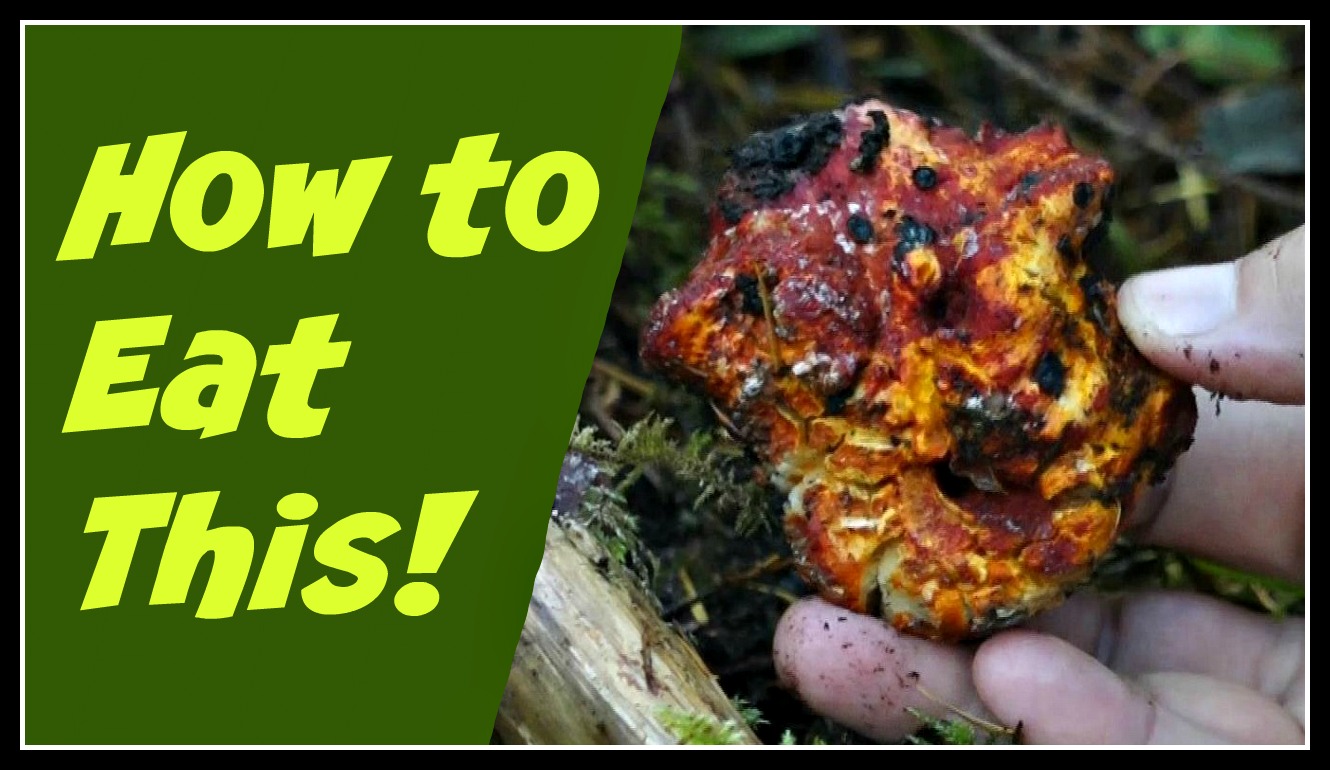
This post is an entry into the King of Steemit How To challenge posted by @papa-pepper. I'm not saying I'm better than @papa-pepper, but I am submitting this in the friendly spirit of the challenge. I've posted some unique How To content here on Steemit, like How To Identify and Eat the Insidious Gomphidius Mushroom, 5 Ways to Eat Hop Shoots, How To Make Hop Mac & Cheese, How To Make Cookies from Spruce Trees and Pine Pollen, How To Roast Wild Carrot Roots and Not Poison Hemlock, Tips and Tricks for How To Eat Garden Weeds, How To Make a Salad from 25 Weeds and the Shaggy Parasol Mushroom - and lots more! I'm not King of Steemit How-To, but I do feel like royalty when I have so much great wild food!
Searching for Lobsters
They are out there, in forests all over North America. But they don't emerge from the soil until weather conditions are just right, usually in the late summer and early autumn. What are they? Lobster mushrooms, Hypomyces lactofluorum. They are a strange mushroom -- really two fungi in one. The Hypomyces lactofluorum attacks and parasitizes other mushrooms, making them delicious to eat.
Here in western Oregon, the poor parasitized mushroom is the Short-stemmed Russula, Russula brevipes. In other places, the vulnerable mushrooms are different Russula or Lactarius species. All these mushrooms have a close mycorrhizal relationship with specific trees - the fungus and trees are connected and share nutrients. So the best way to find a Lobster mushroom is to go the forests that have those trees.
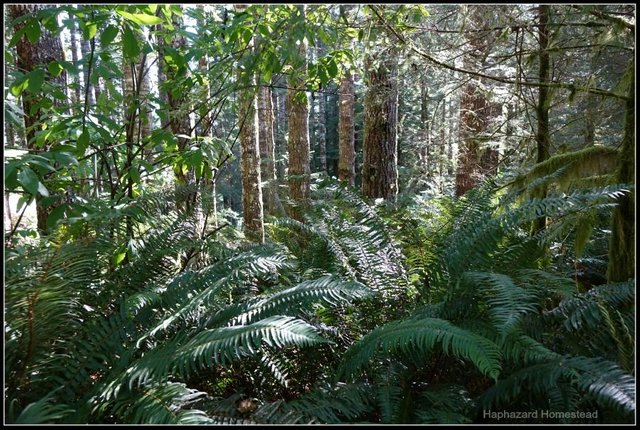
I was hiking through the forest over on the Oregon coast, only a couple miles from the Pacific Ocean. So I was in prime Lobster territory -- forests with spruce, hemlock, and Douglas-Fir trees. In other regions, forests of pine, oaks or other hardwood trees are good places to look, if they have a good layer of decomposing leaves and other duff.
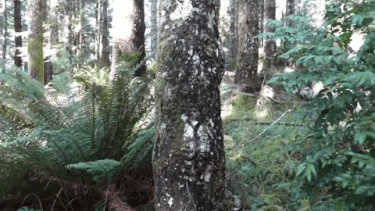.gif)
But you have to look closely! A lot of times, these mushrooms don't even get above the forest floor. They are just "shrumps" or mushroom humps pushing up the debris. At least they are brightly colored, so seeing any part of them is good enough for a closer look.
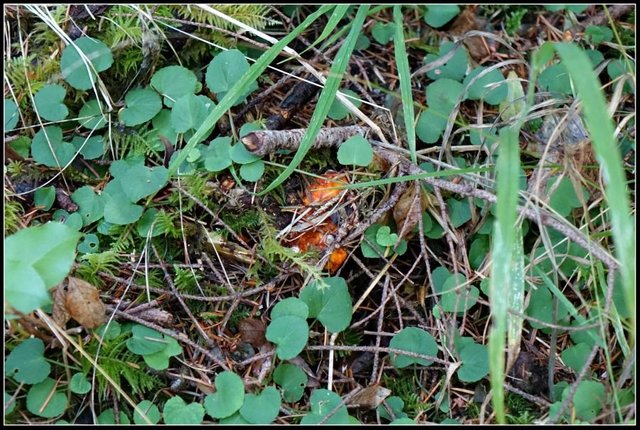
They are nestled down in the duff, so it's fun to see what each one will ultimately look like. They come out of the ground easily.
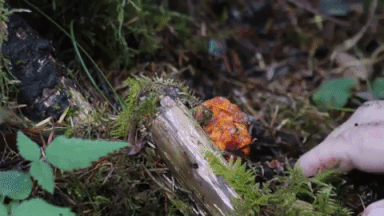.gif)
.gif)
Identifying Lobsters
There is nothing else that looks like Hypomyces lactifluorum! Not only is their color a distinctive orange or red-orange, but you can see that they don't have any gills or other standard mushroom parts. Their skin is a hard, roughly stippled crust that looks like it's covered with little pimples. Any gills under the cap of the host mushroom get reduced to blunt ridges.

Or the lobster mushrooms can be so contorted that they look like some strange lump! What happens is that the parasite infects the baby mushroom, preventing it from forming correctly. Even then, underneath the thin crust, the inside is bright white. And the inside is crisp and brittle, not soft or supple.
.gif)
Taken all together, the colors inside and outside, the rough and pimply crust, and the solid crispness of the mushroom are key identifiers. If you want to see more about identifying Lobster mushrooms, I made a 10-minute YouTube video you might like. It that shows how to use an identification key from the great book, "All That the Rain Promises and More" by David Aurora. It's a great book that shows mushrooms are a lot of fun to know!
.gif)
.gif)
Preparing Lobster Mushrooms to Eat
Lobster mushrooms can have a lot of forest debris on them. It's always good practice in any foraging to pick clean. But that crust keeps lobsters from getting the debris inside, so they can be cleaned back at home. The easiest way to is brush them with an old toothbrush. Their crust can hold up to some scrubbing!
.gif)
.gif)
Then I soak the mushrooms in a bowl of water for about 10 minutes. A lot of mushrooms do not take well to soaking! They will absorb the water and turn into a slimy mess when they are cooked. But Lobster mushrooms are so dense that they won't get soggy. Once they've soaked, I wash them off with running water, cutting off any spots too hard to clean. And I break them up to clean between the bends and crevices of the contorted bodies.
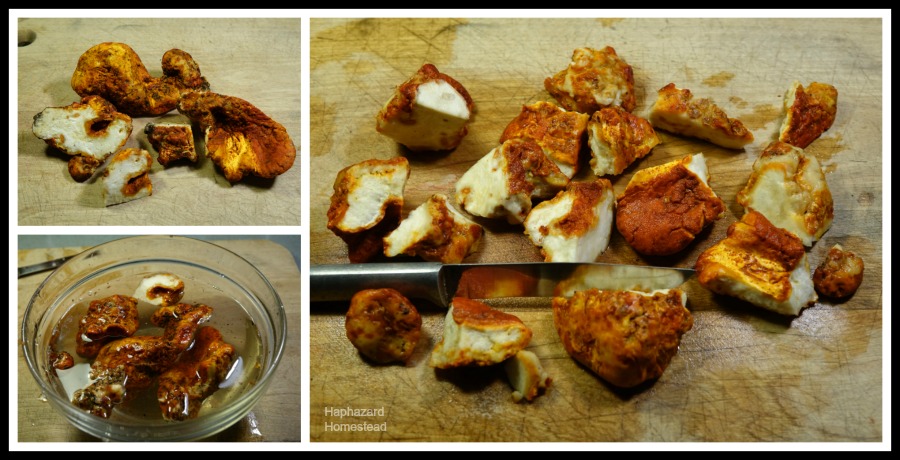
.gif)
Cooking Lobster Mushrooms
Lobster mushrooms are easy to cook. A simple sautee in butter or olive oil works well. Like any mushroom, they should be cooked all the way through. I sauteed these in a little olive oil. I then roasted them in the oven for 10 minutes at 350F degrees, to make them crispy on the outside.
.gif)
.gif)
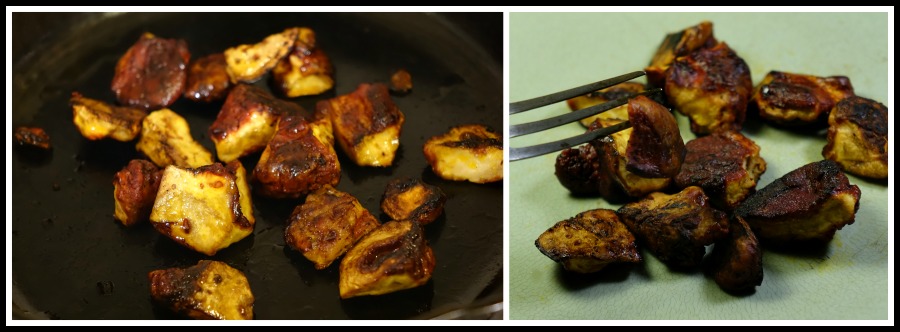
It was so hard to not eat all of these right out of the oven! But I wanted to use some of them for @progressivechef's Steemit Iron Chef Contest, too. You can see how I used them to make a stuffing for Grilled Stuffed Squash Blossoms. This was so delicious! But cooked Lobster mushrooms are great in eggs, soup, with pasta, or in a salad. I'm sure you can find other ways to enjoy them, too.
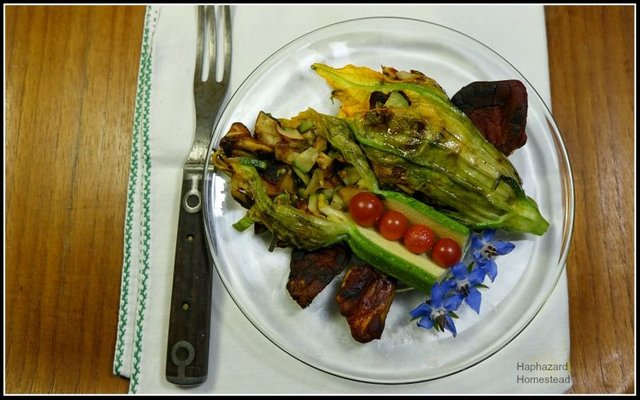
What Do You Think?
I hope you get a chance to try eating Lobster mushrooms sometime! You may be able to find them at a market that has wild-crafted produce, or at restaurants featuring local foods. If you find Lobster mushrooms in any of these places, I would really like to know!
- Have you ever eaten Lobster mushrooms?
- Have you seen Lobster mushrooms in the woods, in a market, or at a restaurant?
- Do you forage for wild mushrooms?
- Would you try eating my wild lobster mushrooms?
I eat a lot of wild plants and show you how, because I believe that we can all have lives that are richer, more secure, more grounded, and more interesting by getting to know the plants and the land around us – in our yards, our parks, and our wilderness.
I would like Steemit to be the premier site for Foraging on the Internet! If you have any thoughts about foraging, or experiences to share, write a post and be sure to use the Foraging tag. And check out the @foraging-trail to see curated quality posts about foraging. Happy Foraging!
Fungus and Plant List
- Lobster Mushrooms - Hypomyces lactofluorum
- Short-stemmed Russula - Russula brevipes
- Spruce - Picea spp.
- Hemlock - Tsuga spp.
- Douglas-fir - Pseudotsuga menziesii
- Oaks - Quercus spp.
- Western Sword Fern - Polystichum munitum
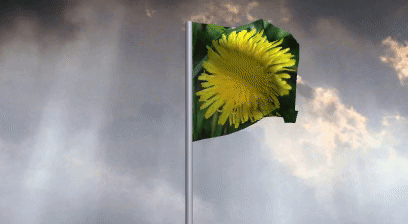
I could use some crisp mushrooms other than the rubbery ones @haphazard-hstead
Thanks, @cryptopie! At least you can still appreciate the unusualness and bright colors of the Lobster mushroom, even though they are so far away!
Now those look good!
Thanks, @improv! These are such cool mushrooms.
That is one very funky mushroom, that's for sure. Thanks for the wonderful post on how to and all that goes along with the lobster's 'capture'. Well done.
I like that these lobsters don't require a lot of equipment to find. And they don't run away, lol. But I do have to get after them at the right time. They don't stick around very long! Mushrooms won't wait on anybody -- they just do their thing on their own timing! It's up to us to work with their schedule! ; )
We must work to get them to put out a calendar. How did that local joke go?? What did the lobster say to the other fungi? Oreganize, oreganize oreganize.
These lobster mushrooms sure make the original mushroom look really unorganized! :O
Have you ever eaten Lobster mushrooms?
No, not yet!
Have you seen Lobster mushrooms in the woods, in a market, or at a restaurant?
No, I haven't seen a Lobster mushroom anywhere until reading this post.
Do you forage for wild mushrooms?
Only for photos, not with the intention of consumption.
Would you try eating my wild lobster mushrooms?
If given the opportunity, YES!
I hope you get to see some forest lobsters soon. If you have a market that features local produce, they might carry wild-crafted mushrooms during your region's season. If you find a market like that, it's worth checking all during the year, to learn to identify some good-tasting and safe mushrooms! The ones in the stores look prettier than these -- I don't think anyone would buy a mushroom that looks as strange as my big lump, lol.
Thanks for resteeming, too, @enternamehere!
There are so many kinds of fungus to see. It's fascinating how many different forms they take. I've been considering finding a fresh local market, there are many in DFW. I'll be sure to make a post when I come across my first "unusual" edible mushroom!
Take care ☺
That will be a great post! I'll look forward to it. I bet they will have chanterelles and maybe Lion's Mane. I'm so excited for you!
Amazing looking eats. and let the games begin LOL.
Thanks! Looking for wild mushrooms is a fun game, too! ; )
Really interesting read. I've never had lobster mushrooms but as a foodie i hope to try then
Glad you enjoyed my Lobster mushroom post. If you visit any wineries that have a restaurant featuring local foods, I've found lobster mushrooms, and other wild mushrooms, on menus there! Winery restaurants are great for foodies! :D
Never seen this mushroom ... maybe we do not grow ... I have to control
This Hypomyces species is just in North America. Europe has others in that genus, but they are different colors and not edible. That's too bad. :(
I wouldn't know what it was if I found one, looks delicious :)
Now you will know! Except these are only in North America. : (
They are fun to find! And eat! :D
There's no chance of me finding any then haha :)
Love the way you presented this post @haphazard-hstead (even though there were no technical difficulties this time, ha :D)! It's informative and makes you want to have those mushrooms right away. Haven't had a chance to get some of those lobster mushrooms yet but hoping to do so next weekend.
I do hope you find more of them this autumn.
Thanks, @offoodandart! Nope, no choking myself this time, lol. Good luck in your search for these lobsters! They are around you, for sure, in the Seattle area and thereabouts. I bet you can find them in the markets, too - or even at roadside setups out in the countryside. There is a lot of buying and selling of Lobster mushrooms that goes on this time of year!
Western Oregon ... you're my neighbor @haphazard-hstead! Kinda ...
I know what they look like but if I find them, I'm not sure how to tell if they can be eaten and they're not poisonous. I think I need to read up first. Thanks for the encouragement though! Looking forward to having some.
Great quote, and this one just may beat me! Never hear of these but would love to try them!
Thanks for the feedback, @papa-pepper! You have these down in Arkansas, too. My parents find them regularly, where they live, over by Greer's Ferry Reservoir. I hope you get to find some sometime. You would appreciate them, for sure.